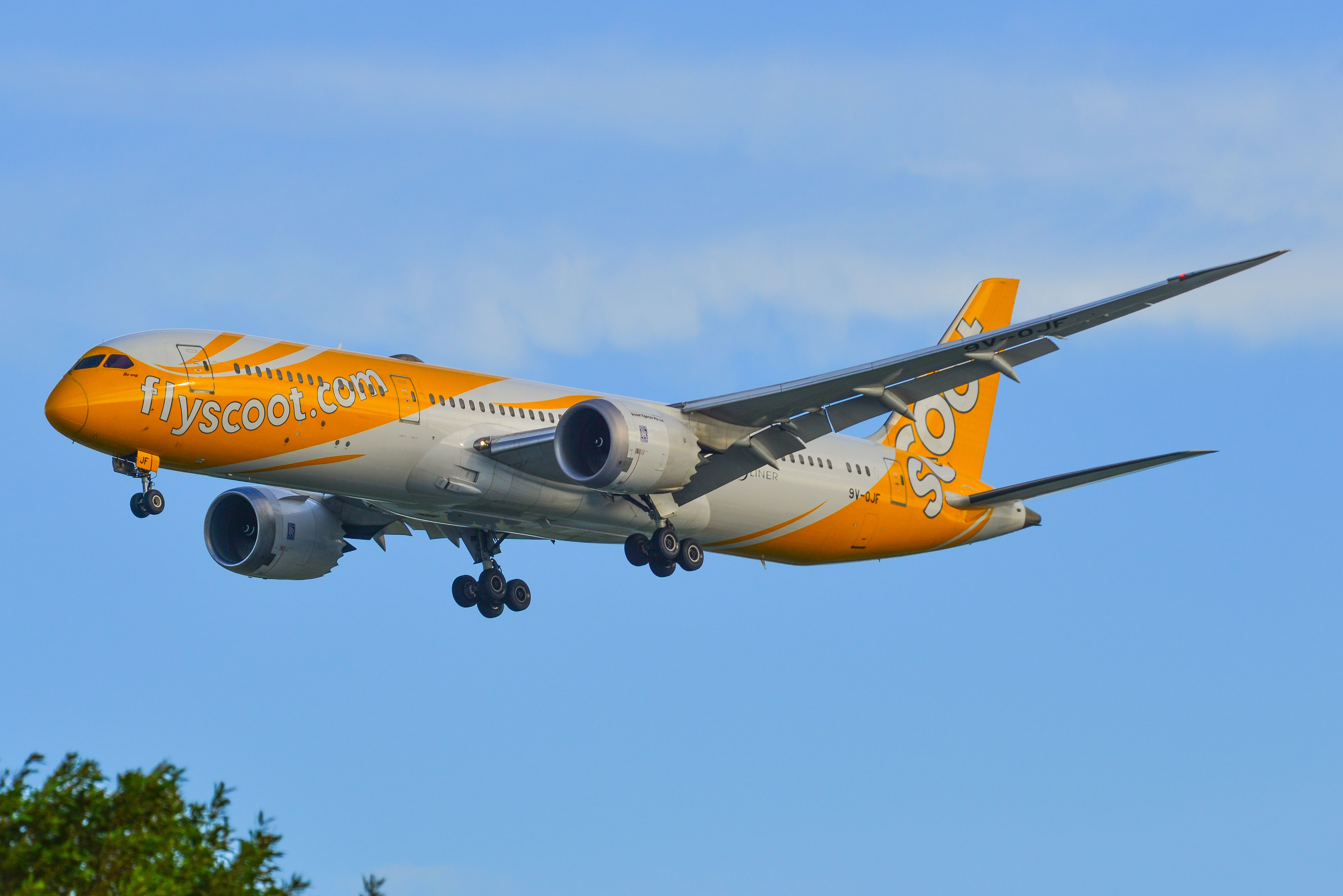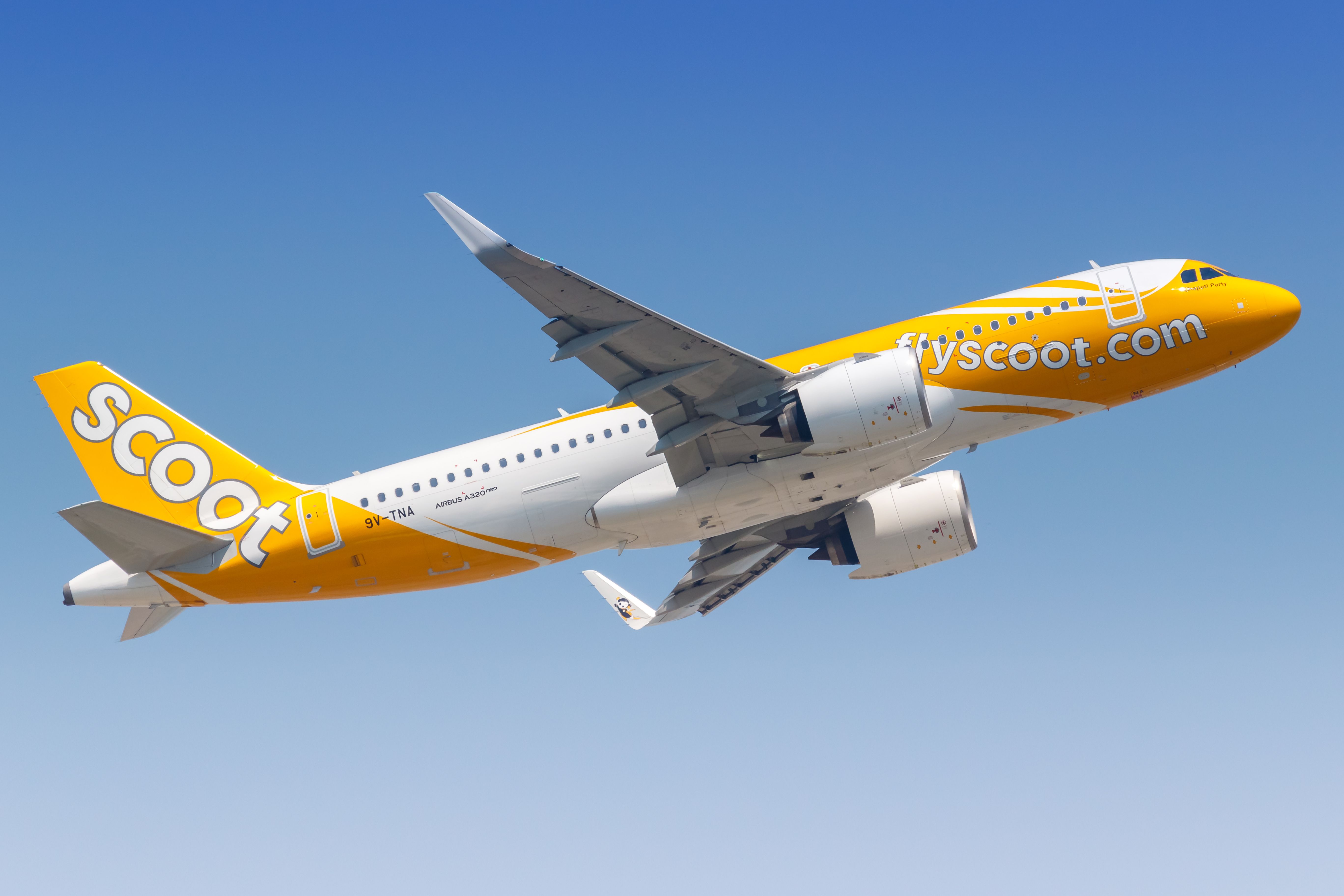Summary
- Using the promoted beta booking site, Scoot currently offers two fare selections: Economy and ScootPlus.
- Upgrading from Economy to ScootPlus can be worth it, depending on the route, day, and time of day.
- On Scoot’s old booking site, which is still available, there are up to four fare classes: Fly, FlyBag, FlyBagEat, and, again, ScootPlus.
Asia is well known for its long-haul low-cost carriers (LCC), and Singapore Airlines’ wholly-owned subsidiary, Scoot, is the primary such operator for the city-state. It has a reasonably extensive route network; from its base at Changi Airport, Scoot flies to 65 destinations mostly scattered across East Asia, in addition to a few cities in Australia, India, as well as Jeddah, Athens, and Berlin. But what does it offer its passengers?
Numbers for the carrier’s two main classes
Scoot formally offers four fares for its flights as advertised on its site, but it’s not so straightforward. Trying to book today will likely have you utilize the carrier’s new beta site, and when you do so, you can choose either “Economy” or “ScootPlus.” The basic economy offering is 10 kg (22 lbs) of cabin luggage and a standard seat; for Airbus single-aisle aircraft, this means a 28-inch (71 cm) pitch and 18-inch (45 cm) width, and with the carrier’s Boeing 787 fleet, a 31-inch (78 cm) pitch and 19.3-inch (49 cm) average width.
ScootPlus, of course, is much more involved. In addition to a seat with 38 inches (96 cm) of pitch and a 22-inch (56 cm) width, travelers aboard the Singaporean low-cost carriers’ ‘ business class’ product can expect 15 kg (33 lbs) of cabin luggage, a checked bag of up to 30 kg (66 lbs), a meal (with alcohol if desired), priority check-in and boarding, WiFi, and a charging port. If possible, flexibility with time can go a long way, as depending on the route, day, and time of day, the price of this upgraded fare can be well worth it.
At the time of writing, searching Scoot’s site for a roundtrip flight from Singapore to Tokyo Narita from August 17th to August 24th returns economy class seats to Japan for $562 USD and $417 on the way back. To upgrade the returning flight to ScootPlus would be an extra $80 on top; given the 6-hour nature of the journey, that might not be so bad. To ‘upgrade’ on the leg to Tokyo, it’s actually $43 cheaper to sit up front, with the listed price sitting at $519 (not normal). Choosing to depart on August 20th would mean a $499 economy ticket or a business class fare of $670.
Now, if you select economy, after entering your personal information, you’ll be directed to a well-designed page to add extras to your flight. These things include insurance, extra baggage, a seat in the “Scoot in Silence” quiet cabin (slightly more pitch than in economy, as if it were the LCC version of premium economy), food, WiFi, etc. But these are marketed as add-ons to an economy class ticket. What happened to the other two fare classes?
All the fares
If you manage to find the original, non-beta version of its booking site, the advertised classes appear. Although you only see “Economy” and “ScootPlus” at first, clicking on ‘economy’ will show three selections, “Fly,” “FlyBag,” and “FlyBagEat.” What these fare classes include is very much self-explanatory.
On an example trip from Singapore to Perth from August 23rd to the 30th, fares on the trip out begin with just a seat at $609 and change. Upgrading to FlyBag for $35 allows for an extra checked bag up to 20 kg (44 lbs). FlyBagEat, for $50 on top of the base fare, includes a 20 kg bag and a hot meal, drink, and snack onboard. But if you want all the same benefits of ScootPlus as listed above, it would be available for $71 over the “Fly” price.
Have you ever flown with Scoot? Let us know your experience in the comments below.
Sources: Scoot, SeatGuru, ch-aviation



